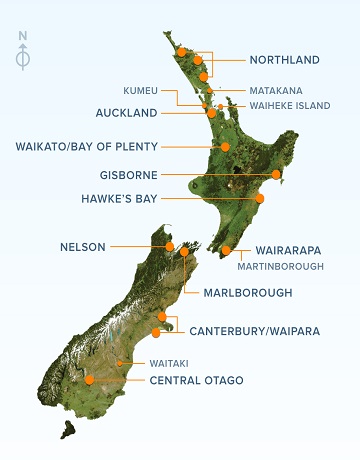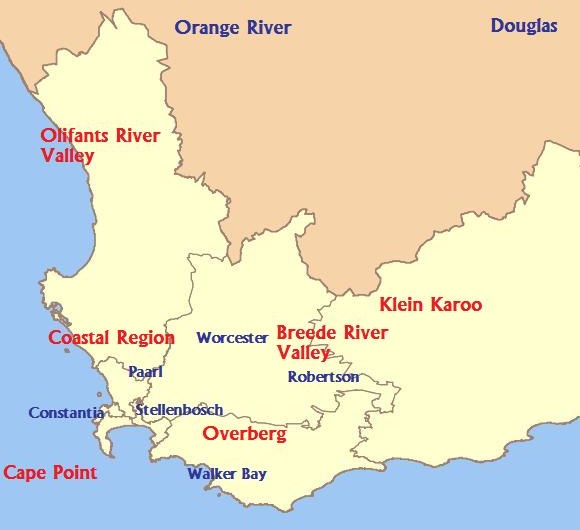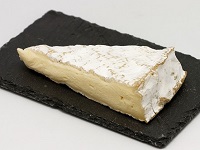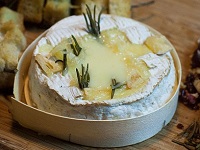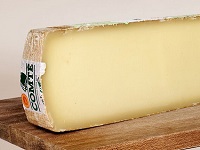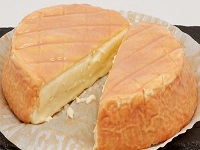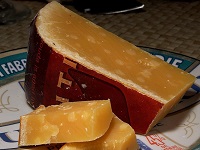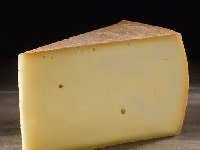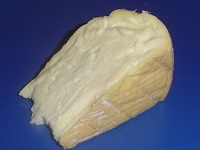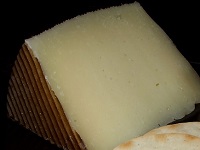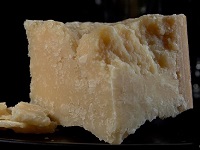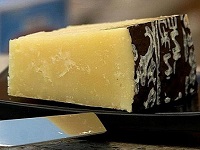World Famous Grapes
Chardonnay
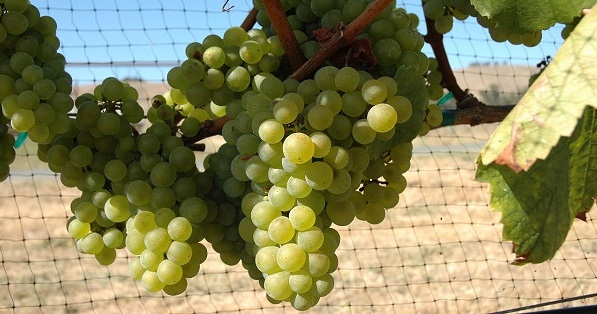
Chardonnay is the most popular white vinifera grape in the world.
It was born in village Chardonnay in the Mâconnais region in Bourgogne (Burgundy).
Chardonnay is used to produce a wide spectrum of wine styles, from creamy, buttery, full-bodied and oak-aged wonders, to lean and crisp everyday wines.
Chardonnay is the main grape in:
- Champagne
- Bourgogne Blanc (White Burgundy)
- Bordeaux Blanc (White Bordeaux)
Chardonnay Flavors
Citrus, Apple, Pear, and Peach are typical Chardonnay flavors.
Notes of White Flowers, Honey, and Flinty Minerals.
Citrus |
Apple |
Pear |
Peach |
Pineapple |
Flowers |
Honey |
Flint |
Flavors from Maturation and Aging
Oak |
Butter |
Croissant |
Hazelnuts |
Notable Chardonnay Regions
Notable Chardonnay regions are:
- USA - California and Washington
- France - Bourgogne (Burgundy)
- Australia
- Italy
Sparkling Chardonnay
Chardonnay is an important component of many sparkling wines:
About Chardonnay
Chardonnay is a grape with a limited taste. It produces wines that need help to become interesting.
This can be done in several ways. One common way is to ferment and store the wine in oak barrels.
Chardonnay also easily absorbs the taste of the soil (terroir), and this is consciously used to complement Chardonnay's taste profile in Europe.
Quality Chardonnay wines always have a round character, a great length, and a rich after-taste, but Chardonnay shows a multitude of styles all over the world, from totally uninteresting, strong alcoholic wines with artificial fruit aromas, to the world's most sublime, perfect balanced wines.
In cool climates, Chardonnay can have a light body with noticeable acidity and flavors of citrus, green apple, and pear.
In warmer locations the flavors are more yellow apple, peach, melon, and tropical fruit such as pinapple.
Chardonnay is popular for 3 important reasons:
- Easy to drink
- Easy to grow
- Easy to sell
Chardonnay wines have no sharp edges and no high acid content. The grape produces large crops and it is not picky about soil and climate. The fact that the wines are easy to sell, also contributes to the grape's popularity among the wine producers.
Chablis vs California
Chablis in France and California in USA are good examples of two very different expressions of the same grape.
Chablis is best known for producing excellent, fresh, and light wines with appealing apple and citrus aromas
California is best known for power, heavy oak, and tropical aromas.
People who like Californian Chardonnay with low acid and high alcohol, may say that a young Chablis is too acidic, and some people may say that they don't like the taste of Chardonnay, because they don't like the taste of oak.
Chardonnay Vinification
Many of the Chardonnay flavors come from terroir (soil) and climate.
But, Chardonnay is also a "Winemaker's grape", and in the hands of a good winemaker, real magic can happen in the wine cellar.
Unoaked Chardonnay is stored in steel or plastic tanks, while oaked Chardonnay is aged in oak barrels.
Steel Tank Chardonnay
Steel tank fermentation produces light and mineral Chardonnays, like the famous French Chablis.
These regions are known for high-quality steel tank Chardonnay:
- Chablis, France
- Loire, France
- Trentino-Alto Adige, Italy
- Friuli-Venezia Giulia, Italy
- Sonoma, USA
- Oregon, USA
- Western Australia
- Chile
- Argentina
Malolactic Chardonnay
Malolactic Fermentation (MLF) softens the acidity and produces a creamy (buttery) texture with flavors of butter and hazelnut, like the famous French Mersault.
Oaked Chardonnay
Barrel Fermentation, storage, and aging will cause the wine to absorb taste from the wood, like vanilla, caramel, spices, smoke and toast flavors, like Californian Chardonnay.
Oak adds flavors to wine, like Vanilla, Caramel, Smoke, and Coconut.
Oaked Chardonnay is also more creamy. This is from a process called malolactic fermentation that happens in the oak barrels. This implies that the malic acid from the grapes are converted to lactic acid, like the acid in milk. This gives oaked Chardonnay a buttery taste.
Chardonnay in France - Burgundy
Chardonnay was born in France.
Bourgogne (Burgundy) is the world's most famous Chardonnay region.
The area was a prehistoric (Jurassic) sea, and the taste of seashells in the soil, you can also find in its wines.
The most famous light Chardonnays are Chablis and Petit Chablis.
The most famous full body Chardonnays are Mersault and Montrachet.
Bourgogne AOC
Unoaked dry Chardonnay.
Chablis AOC
Chablis (Unoaked dry Chardonnay with high acidity)
Petit Chablis (Unoaked dry Chardonnay with high acidity)
Mâconnais
Mâcon AOC (Unoaked dry floral and aromatic Chardonnay)
Pouilly-Fuissé AOC (Oaked full body Chardonnay)
Côte d'Or
Mersault AOC (Oaked full body Chardonnay)
Montrachet AOC (Oaked full body Cardonay)
The most famous Chardonnay in the light side is Chablis. Chardonnay from Mâcon and Saint-Véran is floral, mild and round, while Mersault and Montrachet are identified as buttery and full bodied.
In France, you often find only the name of a place (Chablis, Meursault, Montrachet) on the label, not the name of the grape. You are supposed to know your geography and the region’s AOC hierarchy.
7 Regional AOC (e.g. Côteaux Bourguignons).
44 Village AOC (e.g. Chablis, Côte de Beaune, Nuits-Saint-George).
640 Village Premier Cru AOC The name of the village is followed by the name of the Climat (e.g. Beaune 1er Cru "Les Cents", Pommard 1er Cru "Les Rugiens", Meursault 1er Cru "Les Perrières").
33 Grand Cru AOC (e.g. Romanée-Conti, Le Clos de Vougeot).
Chardonnay in USA
USA is the largest wine market in the world, and Chardonnay is the number one selling wine. The best Chardonnays comes from Northern California.
High Quality areas / regions:
Sonoma Coast (Cooled by Pasific Ocean breezes)
Napa Valley (Warmer and more tropical)
Russian River (Cooled by sea breezes)
Los Corneos (Cooled by San Pablo Bay morning fog)
Santa Barbara County (Cooled by sea breezes)
California
California is a southerly, hot growing region with plenty of sunshine and little rain. Soils are warm and fertile, derfor is ripening accelerated: it`s not uncommon to harvest grapes in August. It`s even blessed with weather predictability!
Russian River Valley, Sonoma and Mendocino Counties (apples, pears, peaches)
Carneros, Sonoma and Napa Counties (flinty)
Monterey County (citric, lemony)
Santa Maria Valley, Santa Barbara County (pineapple, tropical)
Edna Valley, San Luis Obispo County (apricot, fleshy).
Washington State
Chardonnay is the most widely plantet white grape in Washington, and the state produces stunningly good Chardonnays with fruit flavours ranging from apples, pears, peaches and apricots to full-blown tropical.
The climate is colder than in California and results in bright fruit and tropical flavors both in stainless-steel and oak-aged styles.
The winemakers in Washington often use french oak barrels, and the result are often very elegant and "french".
Oregon
In Oregon big winemakers from California and Burgundy (France) have invested in new Chardonnay vineyards.
New York State
New York State has a similar climate to Rhine region in Germany: the area remains cool due to proximity of 11 deep glacial lakes.
This results in a Chardonnay with brisk acidity and clean aromas of apple, pear, white stone fruit and melon.
Chardonnay in Australia
Australia has 10% of the world's Chardonnay plantings and is the third largest Chardonnay grower after France and USA.
High quality areas / regions:
- Margaret River (Western Australia)
- Adelaide Hills (South Australia)
- Morning Peninsula (Victoria)
- Yarra Valley (Victoria)
- Tasmania
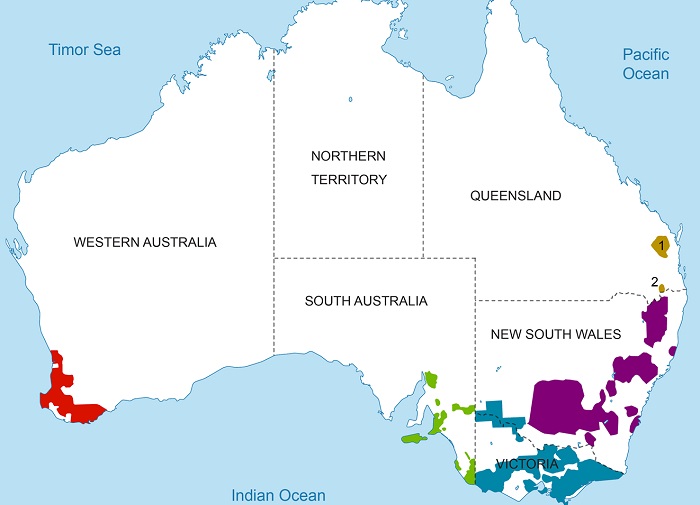
Australian Chardonnays have changed dramatically from rich, fully ripened, heavy oked versions to less oaked, better balanced, cooler climate versions.
Margaret River (Western Australia)
Margaret River is one of Australia’s premier Chardonnay producing regions.
The warm climate is tempered by the effects of the Indian and Southern Oceans.
Margaret River Chardonnays are typically concentrated, rich and complex with typical lime-like acidity.
Adelaide Hills (South Astralia)
Adelaide Hills is very well suited for producing cool climate complex Chardonnay.
With an average altitude of 400 metres, it is the coolest wine region in South Australia.
Adelaide Hills Chardonnays are typically complex and textured with peach and citrus flavours.
Morning Peninsula (Victoria)
The cool Morning Peninsula climate and cooling of the ocean, is ideal for producing Chardonnay.
Morning Peninsula Chardonnays are typically medium-weight with flavours of melon, white peach and citrus.
Yarra Valley (Victoria)
The Yarra Valley has an array of micro climates and vineyard aspects which impacts Chardonnay’s style.
Elevated vineyards sites produce Chardonnays that are typically medium-bodied, textured wines with signature flavours of white peach.
Tasmania
Tasmania is of the coolest regions in Australia. The maritime climate creates a lean and zesty Chardonnay with high acidity. In warmer years, the Chardonnay can be more fruity, creamy and rich.
Chardonnay in Italy
Italian Chardonnay is typical lean and crisp. Unoaked Chardonnay can be found in Friuli, Trentino and Alto Adige.
Chardonnay, Pinot Noir, and Pinot Blanc are the main grapes permitted in the famous italian Franciacorta.
Early Italian wine production in Südtirol (Trentino-Alto Adige), often confused Chardonnay with Pinot Blanc. Pinot Blanc was called "Weissburgunder" (White Burgundy) and Chardonnay was called "Gelber Weissburgunder" (Golden White Burgundy).
In the late 20th century, Italy started to produce pure Chardonnay, and in 1984, Chardonnay was granted its first DOC (Denominazione di origine controllata) in Alto Adige.
Most Chardonnay is planted in the north, but it can also be found as south as Sicily.
The north areas produce a light bodied unoaked Chardonnays with noticeable acidity and flavors of citrus, green apple, and pear.
High Quality areas / regions:
- Trentino-Alto Adige
- Veneto
- Friuli-Venezia-Giulia
- Valle d'Aosta
In Lombardia and Trentino-Alto Adige Chardonnay is used for high quality Sparkling Wines (Franciacorta and Trento DOC).
Chardonnay in Chile
Chile produces cool climate Chardonnay with apple, pear, and tropical fruit flavors.
High Quality areas / regions:
Liamari Valley (Cooled by morning fog)
San Antonio (Cooled by sea breezes and morning fog)
Cassablanca Valley (Cooled by sea breezes)
Central Valley (Only the high altitude areas)
Limari Valley is said to be a perfect region for growing Chardonnay. The soil and climate here tend to produce old world acidity, minerality, and earthiness, combined with new world fruit (the best of both worlds).
Chilean Cardonnay is often good value for money.
Chardonnay in Argentina
The cool regions of the Andes produces a mineral-heavy and vegetative style of Chardonnay.
Argentinian Chardonnay is closer to Burgundy Chardonnay than California Chardonnay.
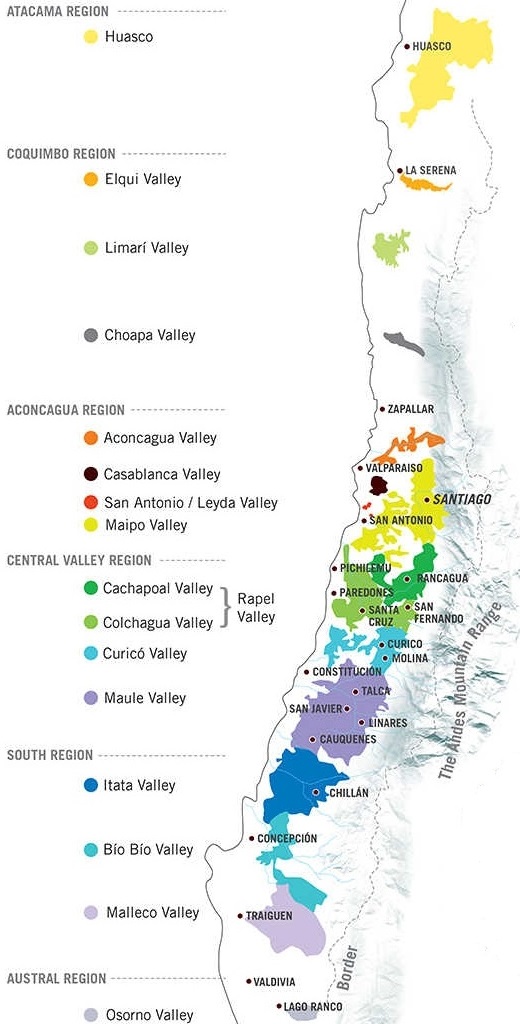
Chardonnay in New Zealand
New Zealand Chardonnays get first prize for French imitations.
High Quality areas / regions:
Marlborough (North-east on the South Island)
Hawke's Bay (East on the North Island)
Gisborne (East on the North Island)
New Zealand Chardonnay is known to be fruit-driven with concentrated citrus and tropical fruit, but a wide range of styles are produced in New Zealand, from fruit-driven and unoaked, complex examples with elegance, and a touch of oak.
Cool climate regions like Marlborough produce medium to light bodied wines with citrus and savoury flavours, minerality, and great acidity. They often holds good quality, with an elegant balance of citrus, minerals, and tropical fruit.
Warmer climates produce wines with full to medium body, rounder and richer flavours, and softer acidity.
Chardonnay in South Africa
High Quality areas / regions:
Walker Bay in Overberg (Cooled by sea breezes)
The highlight for South Africa was De Wetshof’s Bateleur Chardonnay 2020 making the "Top 10 Chardonnay in the World" list in addition to winning a Gold medal.
Chardonnay Terroir
Bad soil means higher quality grapes!
It sounds like a paradox but in poor soils the roots must work harder, branching off to find nutrients. This increases the root-to-soil surface.
Chardonnay is the most widely planted white grape variety because it adapts easily.
The better performance in the world is in Bourgogne and its clay limestone soils. Here every plot expresses its own Chardonnay (Climat).
We can identify three main Chardonnay styles in the Bourgogne winegrowing region, depending on where it is grown:
- The Chablis Premier Cru and Grand Cru are planted on Kimmeridgian clay limestone. The name comes from the english village of Kimmeridge where it was originnaly discovered. The 'Kimmeridgian Chain' starts in the South coast of Great Britain and stretches to the top french soil: Champagne (Aube), Loire (Pouilly, Sancerre, Touraine, Menetou-Salon) and Bourgogne (Chablis, Beaune, Tonnerre, Auxerrois). During the Jurassic age, these areas were a shallow sea known as Paris Basin and today we can still find fossils of seashells buried and compressed into rock and taste them in form of minerality and salinity. Petit Chablis, the lowest in the Chablis hierarchy, does not come from Kimmeridgian soil and tastes more fruity.
- The Côte de Beaune brown limestone and calcium-rich Jurassic soils. A vine’s roots can reach down as far as 10 yards into the soil to draw nutrients. The further south you go in Burgundy, the more you taste the ripeness of the grapes in your wine. Chardonnays from Côte de Beaune have a more intense gold color and taste of white-fleshed fruit.
- The Côte Chalonnaise and the Mâconnais are located in Southern Burgundy and the grapes have no problem ripening here. Cremant de Bourgogne and crisp, (usually) unoaked Chardonnay such Pouilly-Fuissé AOC are from here. The soil is Jurassic limestone.
Chardonnay DNA
In a joint study published in 1999, American and French scientists said DNA research had proved that the Chardonnay vine was a cross between two others: Pinot Noir and Gouais Blanc.
The village of Chardonnay is located in the Haut-Mâconnais in Southern Burgundy, and along with 26 other villages it produces the famous Mâcon-Chardonnay. Under the Mâcon-Chardonnay appellation we find 100% Chardonnay white wines and red wines produced from Pinot Noir and Gamay grapes.Chardonnay Flavors
Citrus, Apple, Pear, and Peach are typical Chardonnay flavors.
Notes of White Flowers, Honey, and Flinty Minerals.
Citrus |
Apple |
Pear |
Peach |
Pineapple |
Flowers |
Honey |
Flint |
Flavors from Maturation and Aging
Oak |
Butter |
Croissant |
Hazelnuts |
Profile
Chardonnay is most often full bodied, with good fruit and medium acidity.
| SUGAR: | Dry (3 g/l) |
| BODY: | Full |
| FRUIT: | Medium Plus |
| ACIDITY: | Medium |
| ALCOHOL: | 12-13% ABV |
| Serving temperature: 10-12°C (50-54°F) | |
Chardonnay Food Pairing
Chardonnay is very food friendly.
It pairs well with Creamy or Buttery Food.
Finger Food |
Grilled Vegetables |
Creamy Pasta |
Risotto |
Fish |
Salmon |
Chicken |
Pork |
Excellent Pairings
Roasted Vegetables. Pumpkins.
Mushrooms. Onions. Garlic.
Anything in a Creamy or Buttery Sauce.
Pasta in Creamy Sauce. Fish Pasta.
Risotto and Rice Dishes.
Lobster or Salmon with Drawn Butter.
Chicken and Poultry in Creamy Sauce.
Pork and Veal in Creamy Sauce.
Rich Fish Soup. Fish Cakes. Tuna.
Hazelnuts. Cashew. Pecans. Coconut.
The Ideal Glass for Chardonnay
The Chardonnay Glass was designed for enjoying full-bodied white wines. They have a wider bowl and a tapered top to enhance the buttery and oaky notes found in aged wines.
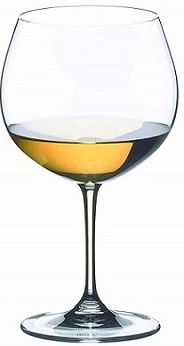
|
The wide bowl steers the wine to the sensitive parts of the tongue, ensuring that the acidity creates a harmonious balance with the sweet aromas of the wine. The wide bowl allows the full bouquet of aromas to develop. It also reduces the risk for over-concentrated aromas. |
Chardonnay Cheese Pairing
Brie or Camembert
These creamy, rich cheeses complement the full, round mouthfeel of a full-bodied Chardonnay. The buttery flavors in both the wine and the cheese enhance each other beautifully.
Gruyère and Comté
The nutty, slightly sweet flavors of these cheeses pair well with the complex fruit and oak characteristics of a full-bodied white wine. The firm cheese texture adds a pleasant contrast to the richness of the wine.
Munster And Époisses
A rich and pungent washed-rind cheese provides a bold contrast to the refinement of a full-bodied Chardonnay.
Aged Gouda
Aged Gouda, with its caramel and butterscotch notes, matches the depth and complexity of a full-bodied Chardonnay. The wine’s acidity helps balance the cheese’s rich flavors.Havarti
The creamy and mild flavor of Havarti pairs well with the rich and buttery texture of a full-bodied Chardonnay, making for a delightful and balanced pairing.
Aged Cheeses
The crystalline texture and savory, nutty flavor of aged chesses will complement the undertones of a full-bodied Chardonnay.
